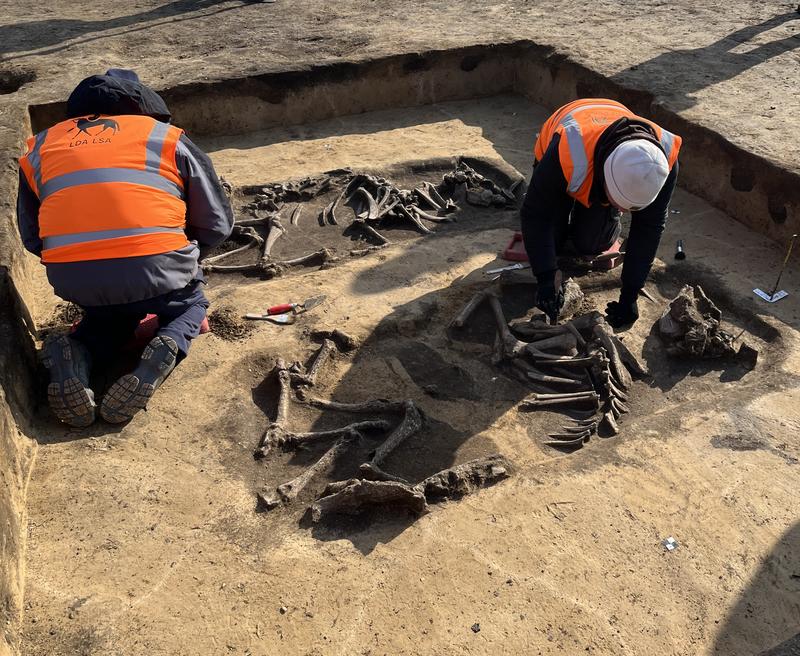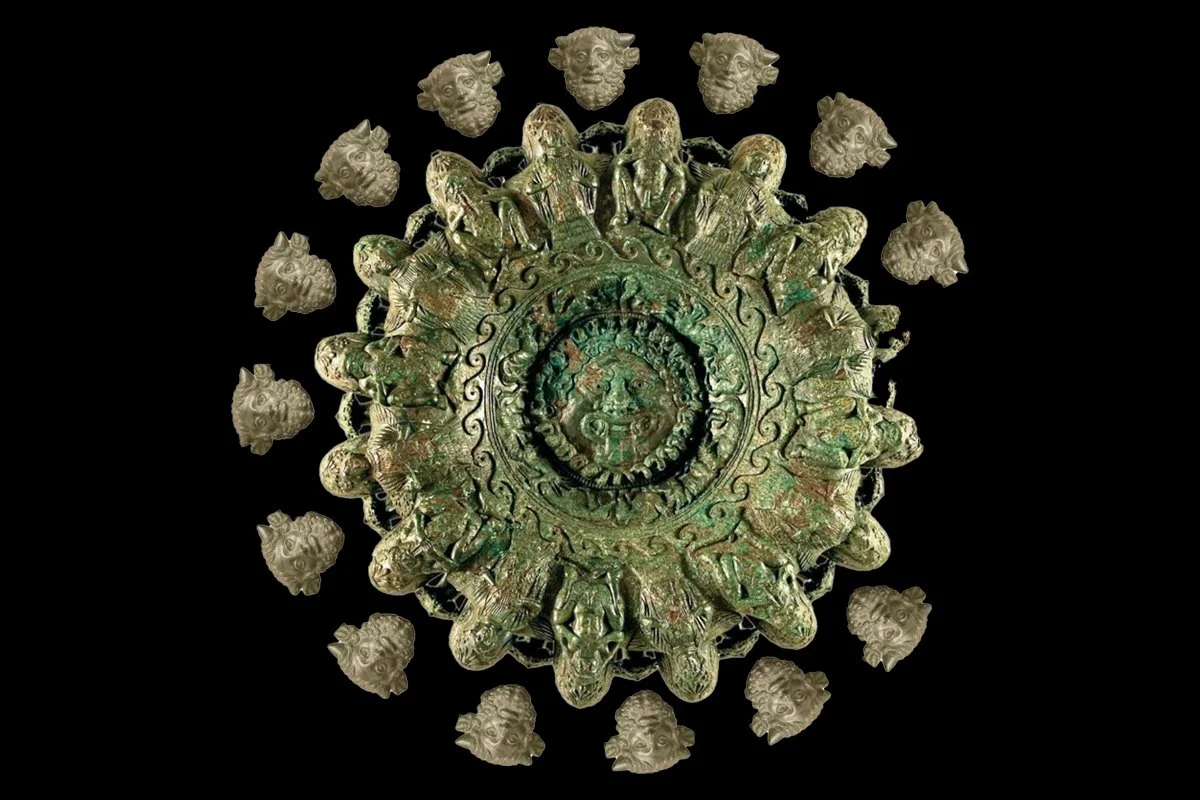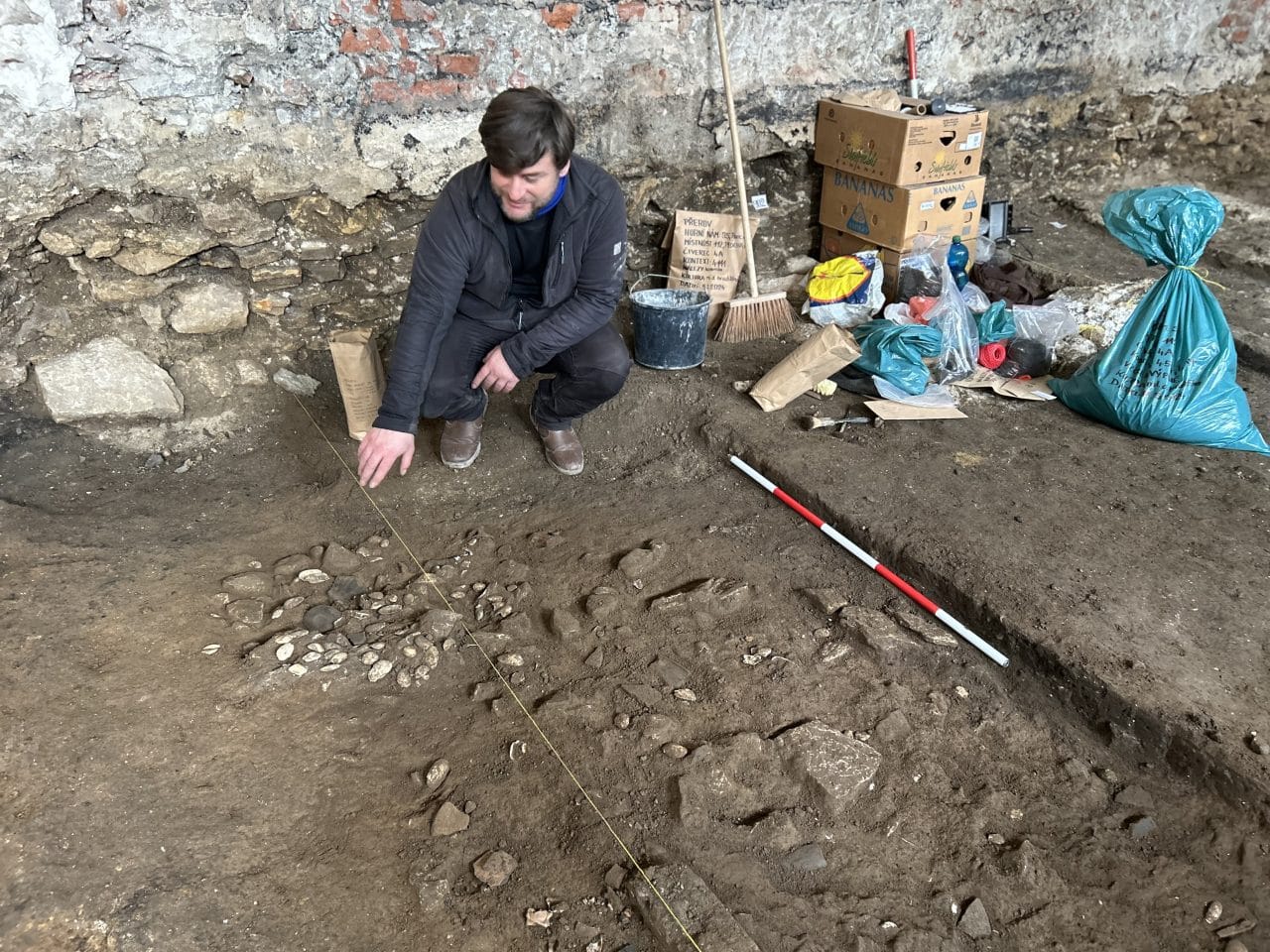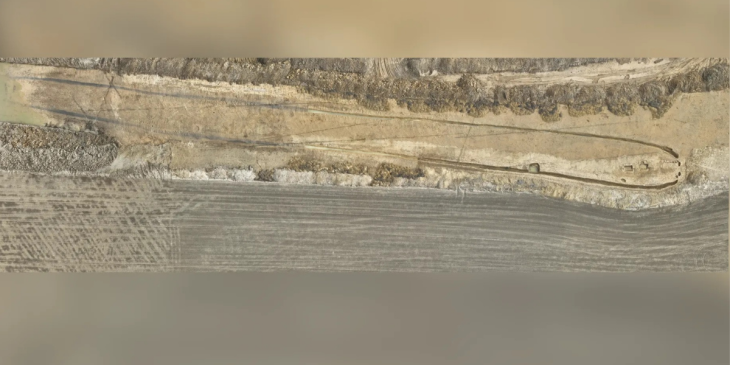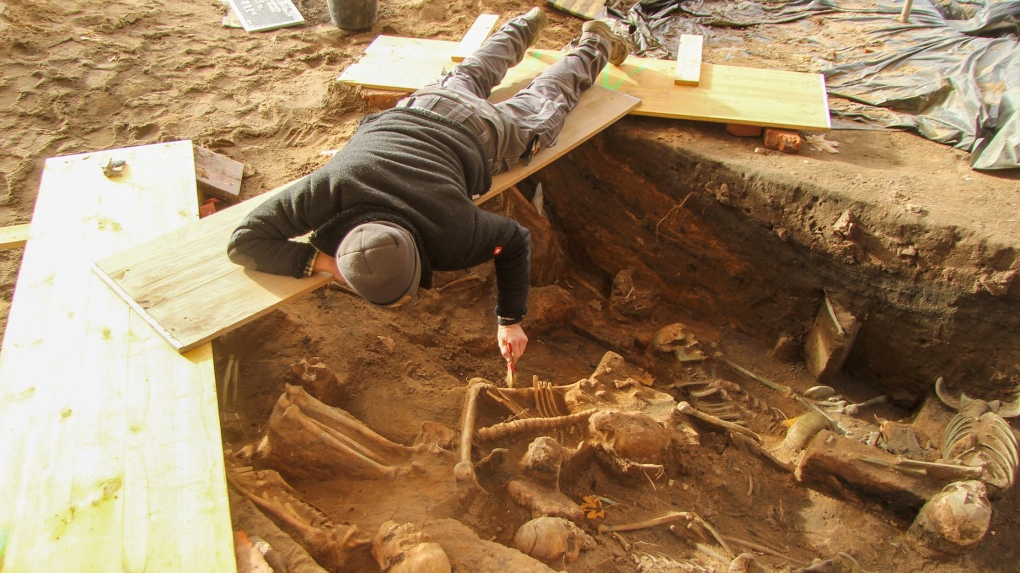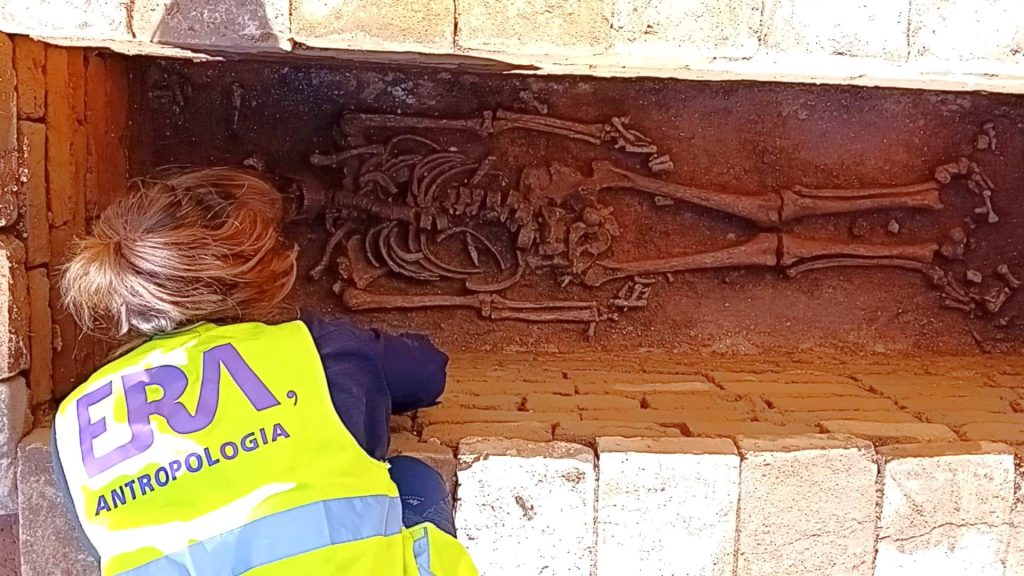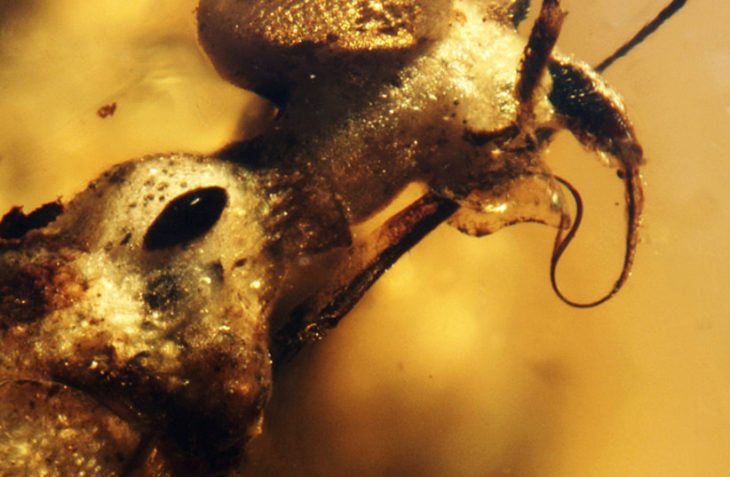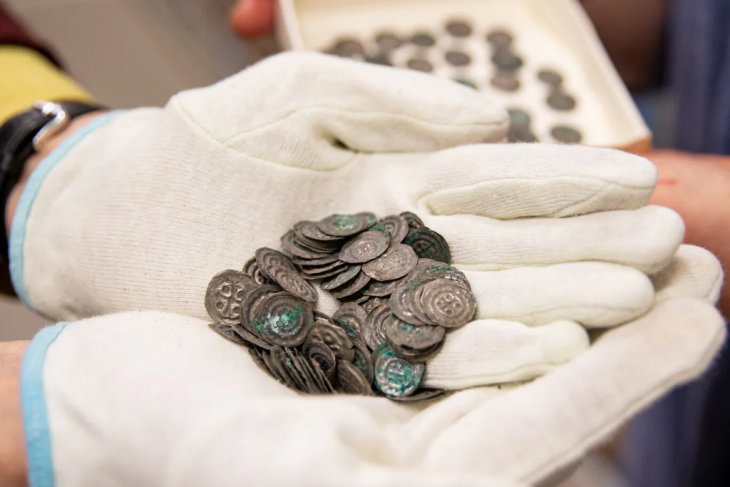Archaeologists from the Saxony-Anhalt State Office for Heritage Management and Archaeology (LDA) have discovered two monumental mounds containing wooden burial chambers dating back some 6,000 years in Eulenberg, near Magdeburg.
The mounds were found at the site in Eulenberg near Magdeburg ahead of construction activities by US chipmaker Intel since 2023.
The mounds were located 200 meters apart and remained important for prehistoric people for a long time.
About 1000 years later, the corridor between the mounds was used as a ceremonial route where cattle were sacrificed and people were buried.
According to a statement by the LDA, the mounds were made during the time of the Baalberge (4100-3600 BC), a late Neolithic culture that inhabited central Germany and Bohemia.
The mounds were built on top of wooden burial chambers. Both chambers are trapezoidal in shape and between 20 and 30 meters long. Both were undoubtedly covered with a lot of earth; probably the burial mounds dominated the landscape.
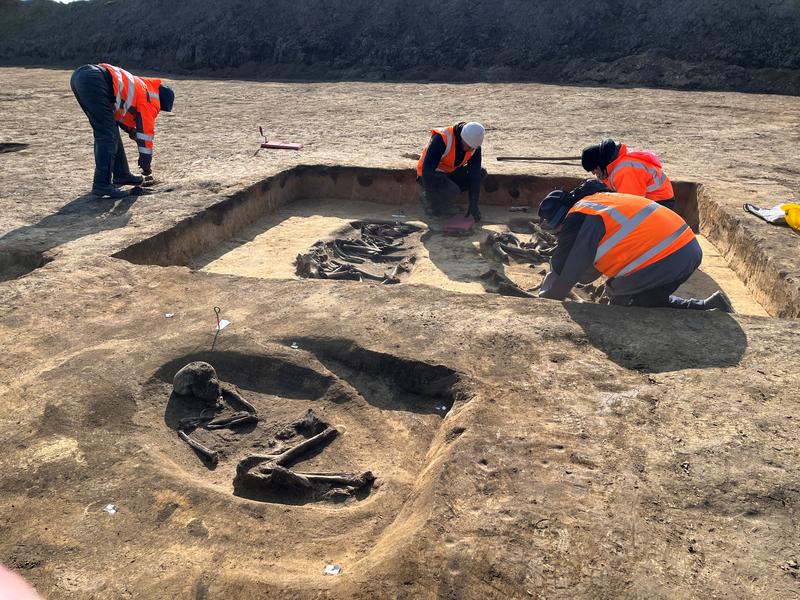
The corridor in between was probably a parade route about a thousand years later, during the Global Amphora Culture (3300-2800 BC). Along this route, pairs of young cattle aged 2 to 3 years were sacrificed and buried.
In one case, the grave of a man between 35 and 40 years old was dug in front of the cattle graves, and orchestrations already known from other ancient and contemporary graves created the image of a chariot with a driver or plow pulled by cattle. Together with the cattle they symbolize that the most important property, the security of one’s own livelihood, was offered to the gods.
About 1,000 years later, an enclosure ditch, still 50 cm wide, took the route of the old parade route and deliberately incorporated the larger of the two burial mounds into the larger burial landscape of about 3 hectares. It ran over the cattle graves but did not destroy them.
In addition, several Corded Ware Culture burial mounds (ca. 2800-2050 BC), about 10 m in diameter, were discovered about 600 m away. The consistency in the ritual use of this part of Eulenberg is surprising, and further analysis of the finds promises even more interesting insights.
Source: State Office for Heritage Management and Archaeology Saxony-Anhalt (LDA)

